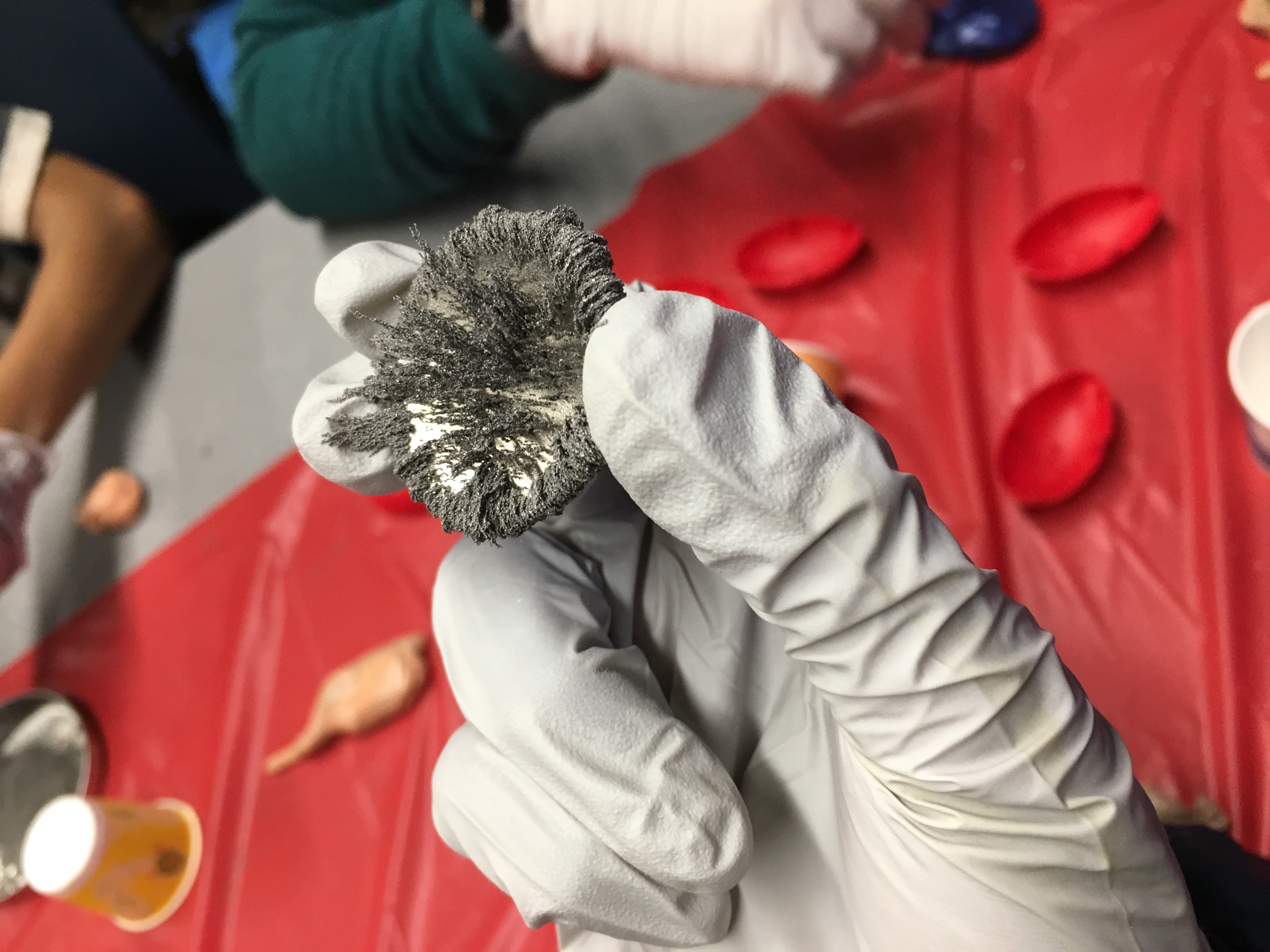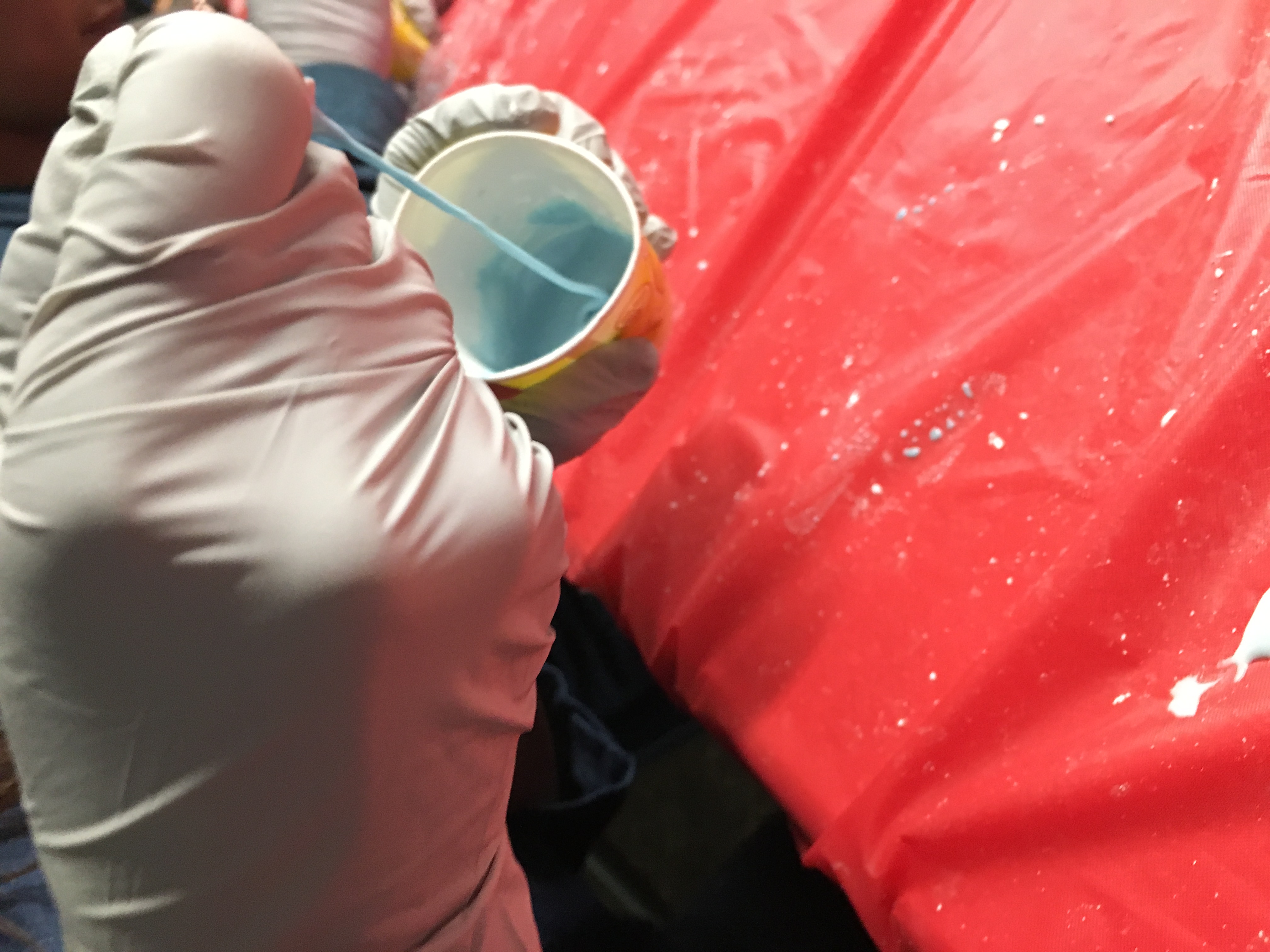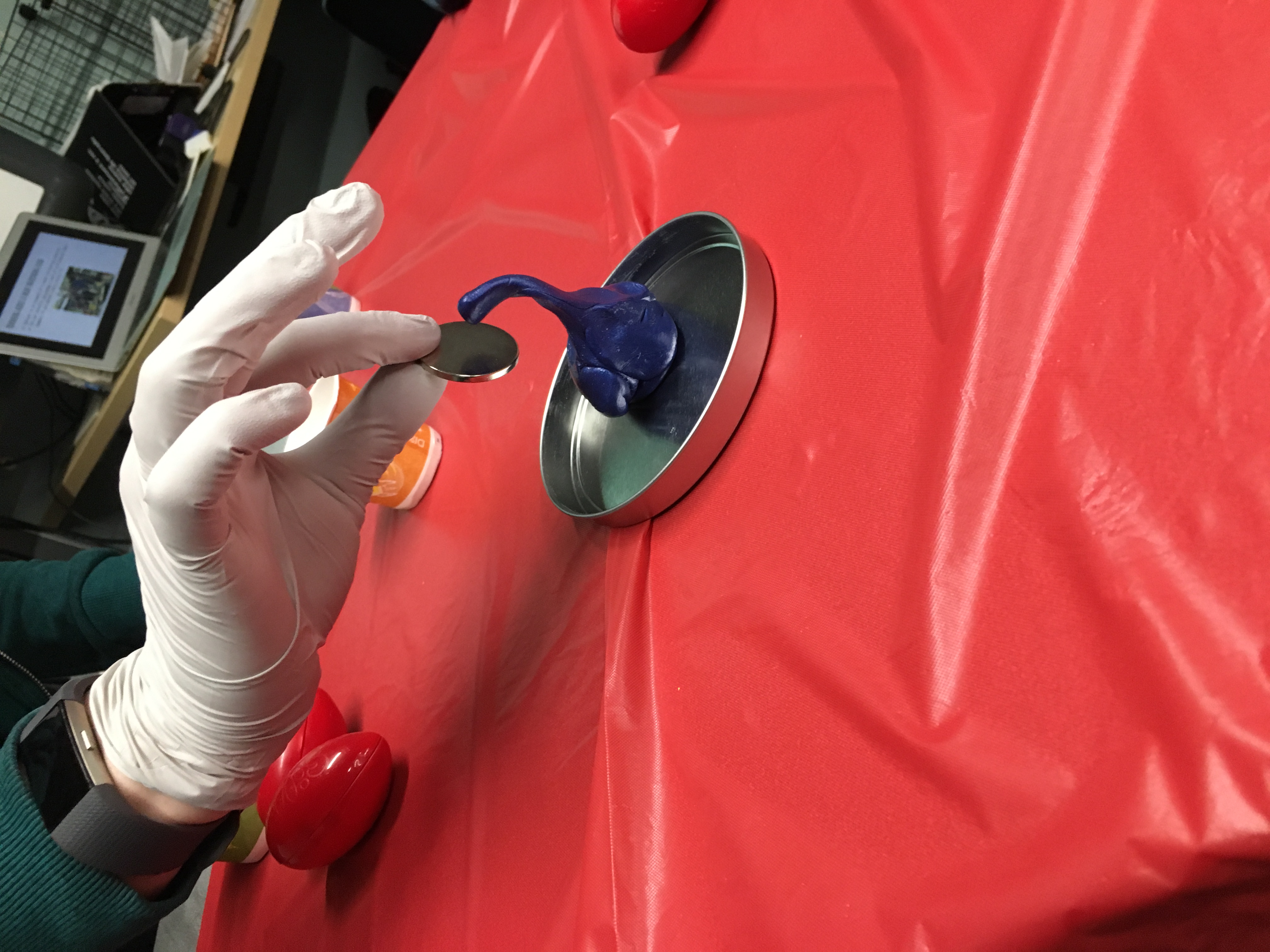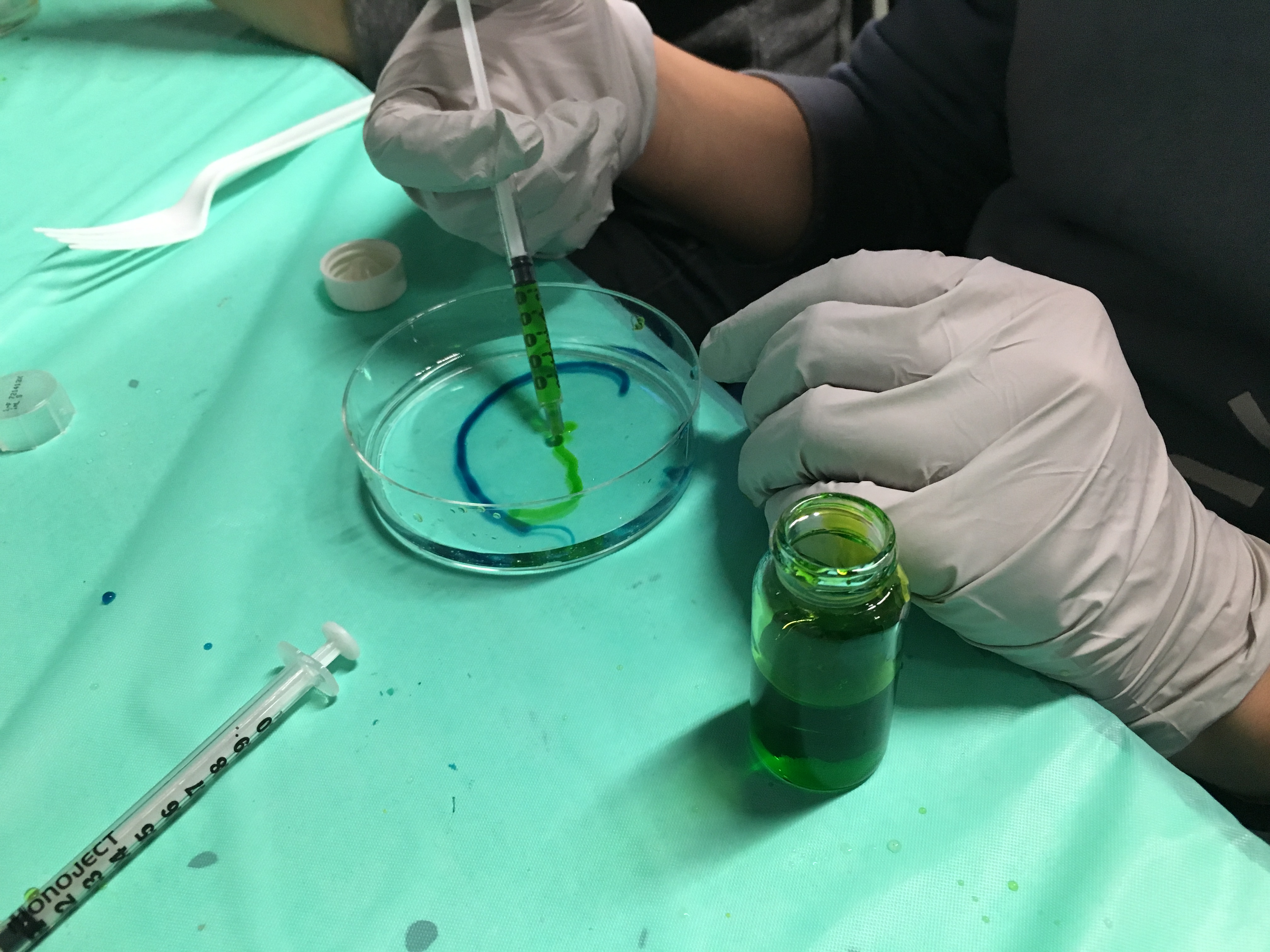
02.23.2018
Experiment Leaders: Shweta and Athena
This was our first trip to our Venture Academy 7th grade class for the spring semester. To switch things up a little bit from what the students are currently learning in class, we decided to demonstrate to them several experiments on rheology, which is the study of how materials flow. Rheology is a topic most students would not be exposed to in school (or even in university for that matter!), so some of them were pleased to learn something totally new.

To start off, we gave a brief explanation about rheology and several topics associated with it such as viscoelasticity, shear thickening and thinning, Newtonian and Non-Newtonian fluids, and crosslinking. We had the students split into six groups with two groups performing the same experiment. One of the experiments was learning about shear thickening phenomena using Oobleck, which is a cornstarch-water mixture. They learned that depending on how quickly they poked the Oobleck with a popsicle stick, the material would respond differently. At high shear rates (rapid pokes), it feels thicker and the stick wasn’t able to poke through. At low shear rates (slow pokes), the stick was able to easily slide through the Oobleck. This is a result of the shear thickening properties of cornstarch solutions. They also watched a video showing kids running through a pool of cornstarch (and one getting stuck because she didn’t move fast enough!).

